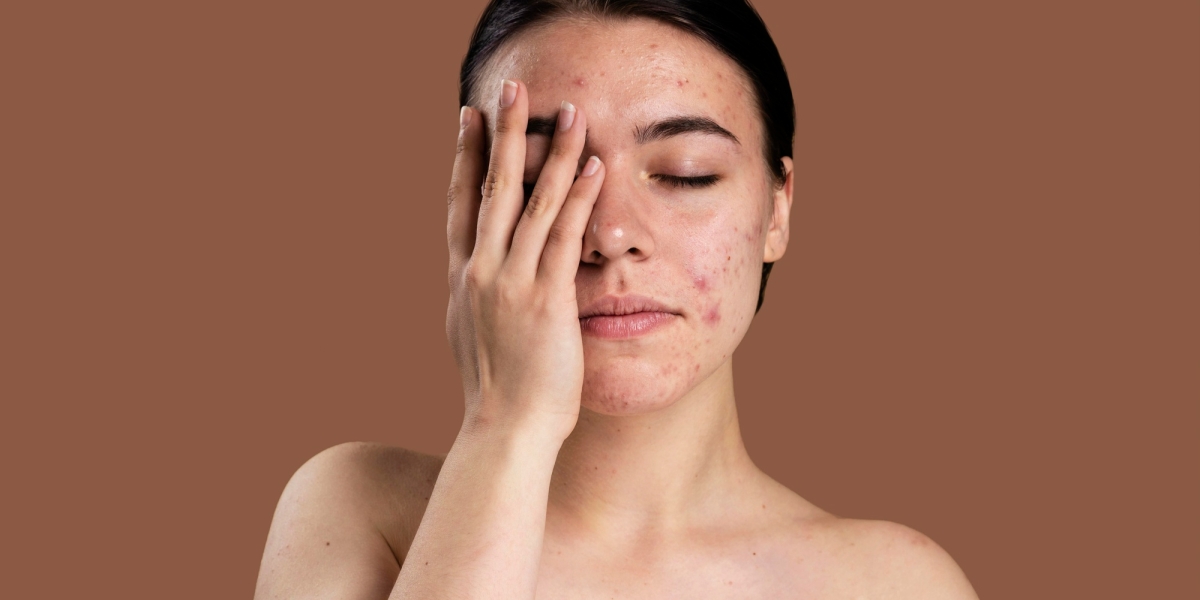Introduction
Acne scars are a common aftermath of acne, affecting many individuals even after the acne itself has cleared. These scars can vary in appearance, from shallow depressions to deeper indentations, and can have a significant impact on a person's self-esteem and confidence. Fortunately, various treatment options are available to help reduce the appearance of acne scars and improve skin texture. This guide explores the types of acne scars, the science behind scar formation, and the most effective treatment options available.
Types of Acne Scars
-
Atrophic Scars: These are depressed scars that occur when the skin loses tissue during the healing process. Common types include:
- Ice Pick Scars: Deep, narrow scars that penetrate into the dermis, resembling the marks left by an ice pick.
- Boxcar Scars: Broad, depressions with well-defined edges, giving the appearance of "boxes" on the skin.
- Rolling Scars: Smooth, wave-like scars with irregular edges, giving the skin a rolling appearance.
-
Hypertrophic Scars: These are raised scars that occur when the skin produces excess collagen during the healing process. They are often red or purple and may feel firm or thick to the touch.
-
Keloid Scars: A type of hypertrophic scar that extends beyond the original boundaries of the acne lesion. Keloids are raised, thick, and can sometimes be itchy or painful.
Science Behind Acne Scarring
Acne scars result from the skin's natural healing process after an acne lesion. During the healing process, the body produces collagen to repair damaged skin. The balance between collagen production and breakdown determines the final appearance of the scar. Scar formation can be influenced by several factors:
- Inflammation: Severe inflammation during acne outbreaks can lead to more significant damage and scarring.
- Collagen Production: Excess or insufficient collagen production can lead to hypertrophic or atrophic scars.
- Genetics: Some individuals are more predisposed to scarring based on their genetic makeup and skin type.
Effective Acne Scar Treatments
-
Topical Treatments:
- Retinoids: Vitamin A derivatives that promote cell turnover and stimulate collagen production. They can help improve the texture and appearance of acne scars.
- Silicone Gel: Used to soften and flatten raised scars by hydrating and protecting the scar tissue.
- Hydroquinone: A skin-lightening agent that can help reduce hyperpigmentation associated with acne scars.
-
Chemical Peels:
- Glycolic Acid Peels: Exfoliate the outer layers of skin to improve texture and reduce the appearance of scars.
- Salicylic Acid Peels: Help clear clogged pores and improve skin texture, beneficial for acne-prone skin.
-
Microdermabrasion:
- A non-invasive procedure that uses fine crystals to exfoliate the outer layer of the skin, promoting new cell growth and improving the appearance of scars.
-
Microneedling:
- Involves using fine needles to create micro-injuries in the skin, stimulating collagen and elastin production. This technique helps improve the texture of atrophic scars and overall skin appearance.
-
Laser Therapy:
- Fractional Laser: Targets small areas of the skin to promote collagen regeneration and improve scar texture.
- CO2 Laser: Uses carbon dioxide to remove layers of scar tissue, which helps in reducing the depth of scars and promoting smoother skin.
-
Fillers:
- Hyaluronic Acid Fillers: Temporarily fill in depressed scars, providing a smoother skin surface. Results are generally temporary and may require periodic touch-ups.
- Collagen Fillers: Stimulate the body's own collagen production to improve the appearance of atrophic scars over time.
-
Platelet-Rich Plasma (PRP) Therapy:
- Involves injecting a concentration of platelets from the patient’s own blood into the scar tissue. PRP promotes healing and collagen production, improving scar appearance.
-
Subcision:
- A minor surgical procedure where a needle is inserted under the skin to break up fibrous scar tissue, allowing the skin to rise and become more level with the surrounding area.
Preventing New Scarring
To minimize the risk of new acne scars, consider the following tips:
- Avoid Picking or Squeezing Pimples: This can increase inflammation and lead to scarring.
- Use Non-Comedogenic Products: Choose skincare and makeup products that do not clog pores.
- Follow a Consistent Skincare Routine: Incorporate gentle exfoliation and products that address acne and prevent breakouts.
- Wear Sunscreen: Protecting the skin from UV exposure can prevent further discoloration and darkening of scars.
Conclusion
Acne scars can have a lasting impact on one’s appearance and confidence, but various treatments are available to improve their appearance and restore skin texture. From topical treatments to advanced procedures like laser therapy and microneedling, there are options to address different types of scars effectively. Consulting with a dermatologist or skincare professional can help determine the most appropriate treatment plan based on individual needs and skin type, ensuring the best possible results in the journey toward clearer, smoother skin.
